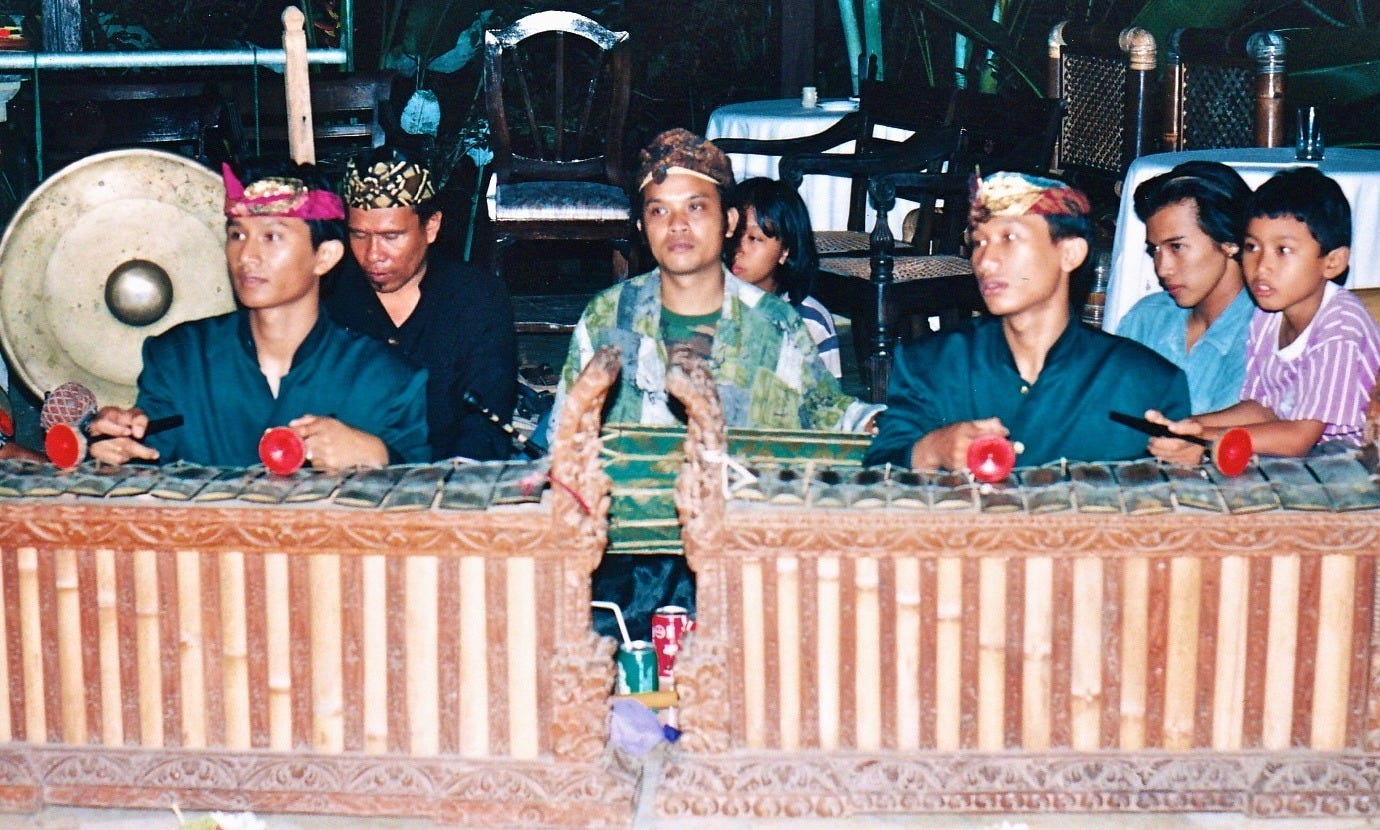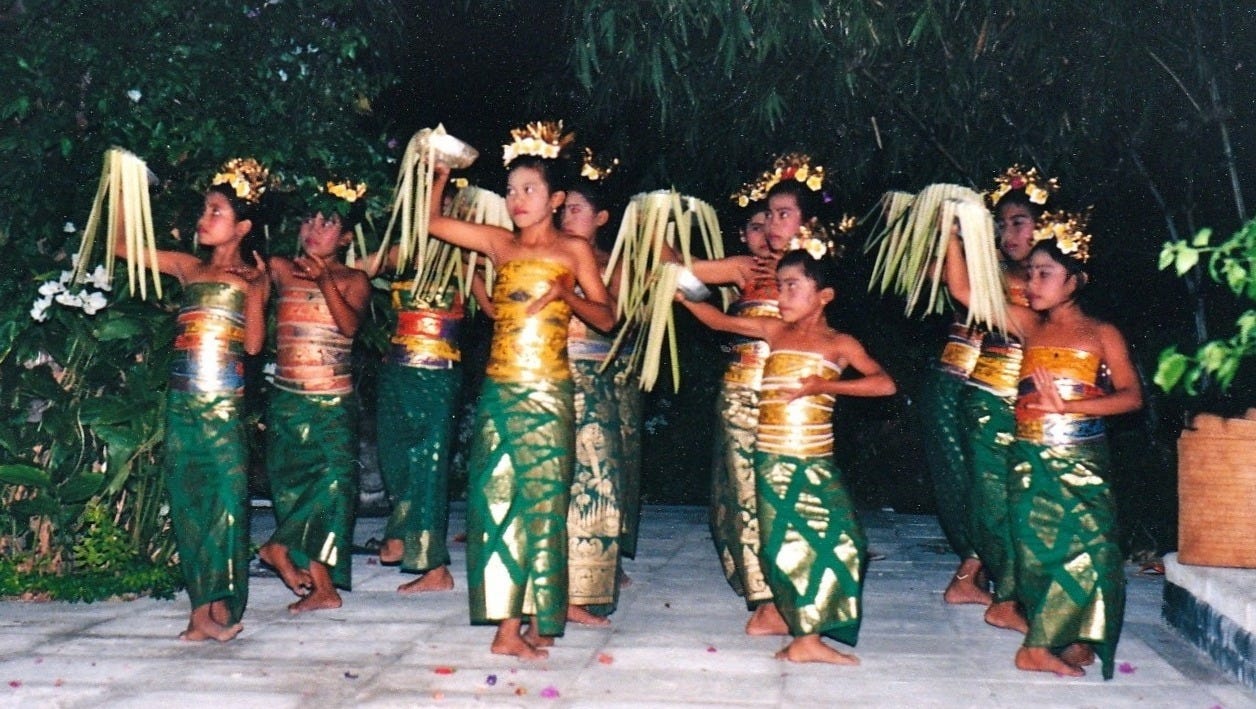Ancestral Connection through the Arts
I feel a deep connection to my Indonesian roots through the arts. One evening in Bali, I was drawn by the rapid, rhythmic sound of gamelan music echoing through the balmy air. The ensemble—primarily percussive—featured metallophones (tuned metal bars akin to xylophones), kendhang (hand-played drums), along with bamboo flutes, rebabs (bowed string instruments), and traditional xylophones. The music flooded the silence with vibrant intensity. Compelled, I left my hotel room and followed the sound down the street. Under a pavilion, local Tulamben musicians were rehearsing. Being in Bali, they weren’t playing the more melodic Javanese style; this was Kebyar—a fast-paced, dramatic form unique to Balinese gamelan.
Above is a video of Lisa Graciano, a friend and musician, learning to play on gamelan. It is a traditional piece usually performed by a Balinese Gender Wayang Gamelan which is a chamber music type orchestra consisting of 2-4 musicians. Video courtesy of Lisa Graciano.
I’ve often imagined myself as a musician—jamming with a band or laying down tracks in a studio. In those fantasies, it’s always rock music. But this was live music! And it was Indonesian music! . It felt both unfamiliar and foreign, and yet strangely intimate. Drawn in, I moved closer, eventually stepping onto the pavilion platform. I could feel the music resonate through my body. I longed to be one of them.
Then the music stopped. Disappointed, I thought it was over—like the end of a concert. But suddenly, they launched into another set—this time playing Balaganjur, a ceremonial procession-style gamelan. It was louder, more intense, and completely enveloped me. I felt a rush of joy and emotion. Tears streamed down my cheeks.
In Malang on Java, I witnessed a group of young girls dancing to gamelan. With graceful movements and slight gestures—tilts of the head, subtle shifts of the eyes and hands—they embodied a refined elegance. Dressed in vibrant sarongs, they moved with a beauty that felt deeply familiar. Though I had never learned this traditional dance, I recognized something in their expression—something reminiscent of my relatives’ mannerisms.
Eventually, I learned the Javanese concept of alus—refinement, subtlety, and ethereal grace. It is not just a style of movement, but a way of being, deeply embedded in Javanese identity. The cultivation of alus is seen as essential to becoming truly Javanese. Moreover, the ability to create objects of beauty is considered a reflection of one’s character. In Javanese thought, art is not mere decoration; it is a means to express a mature and nuanced understanding of social and spiritual life.
Through the arts of Java and Bali, I experienced an inner refinement that awakened a deeper understanding of something I had always intuitively known.
Adapted from Mixed Blood: Reconciling My Colonial Family’s History in the Dutch East Indies



